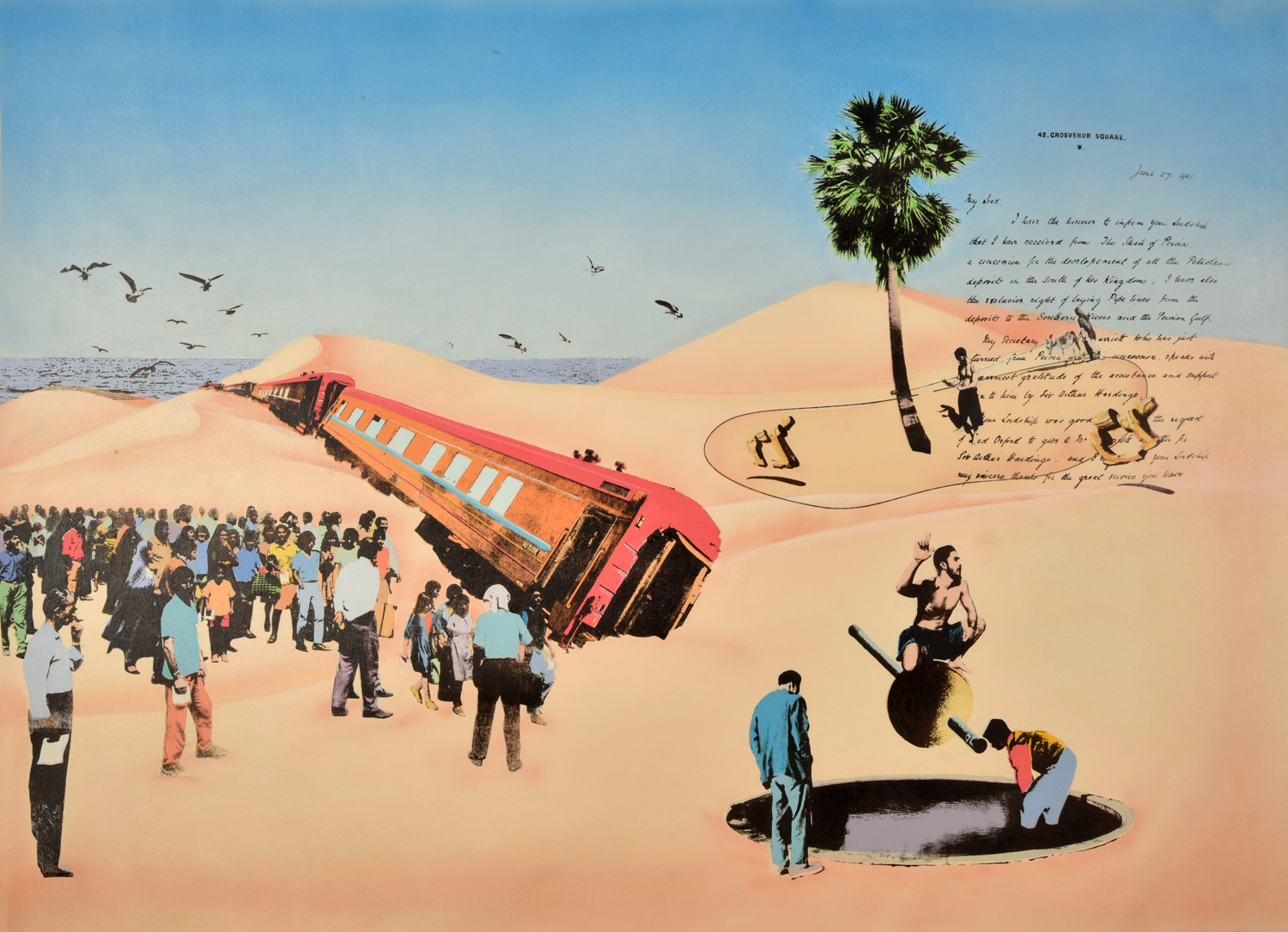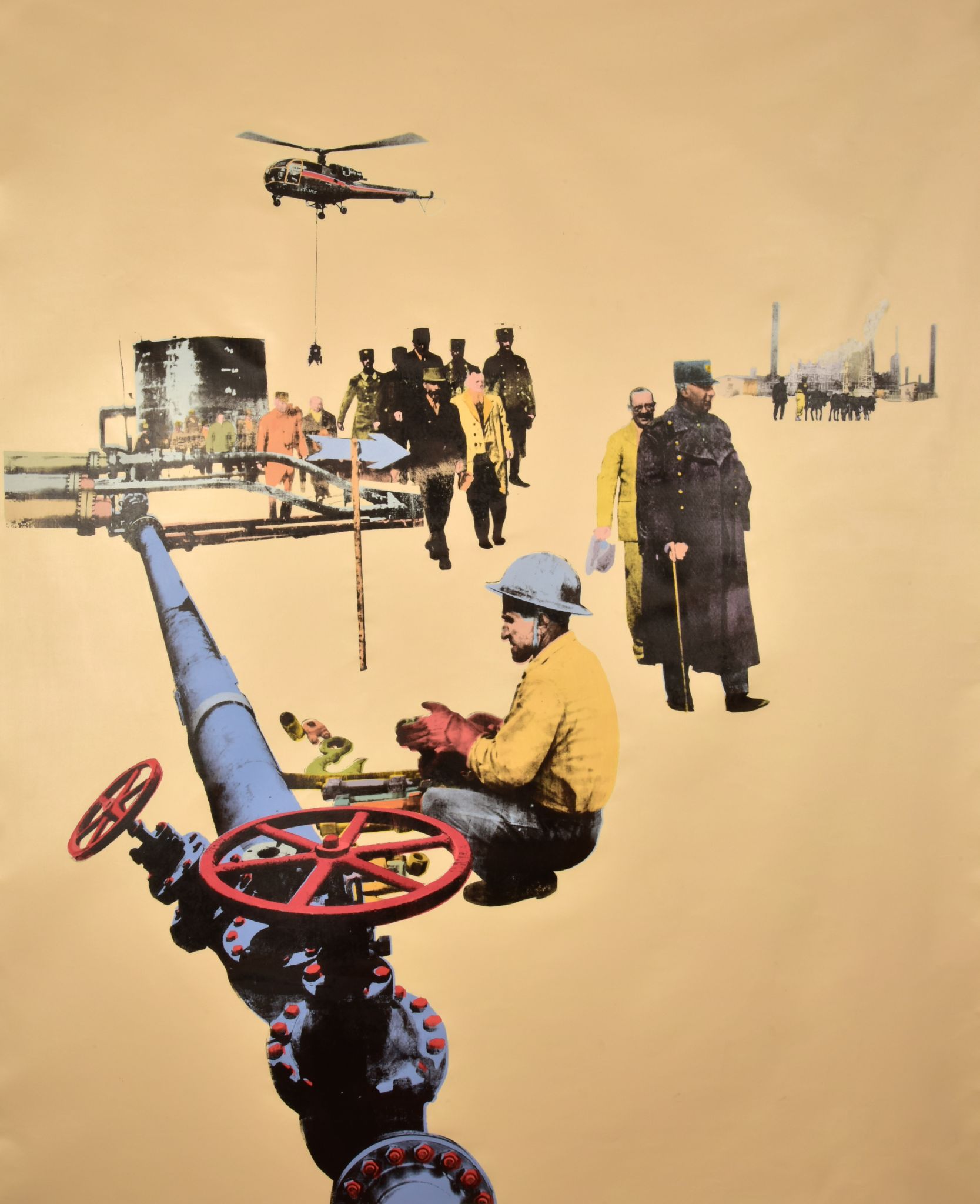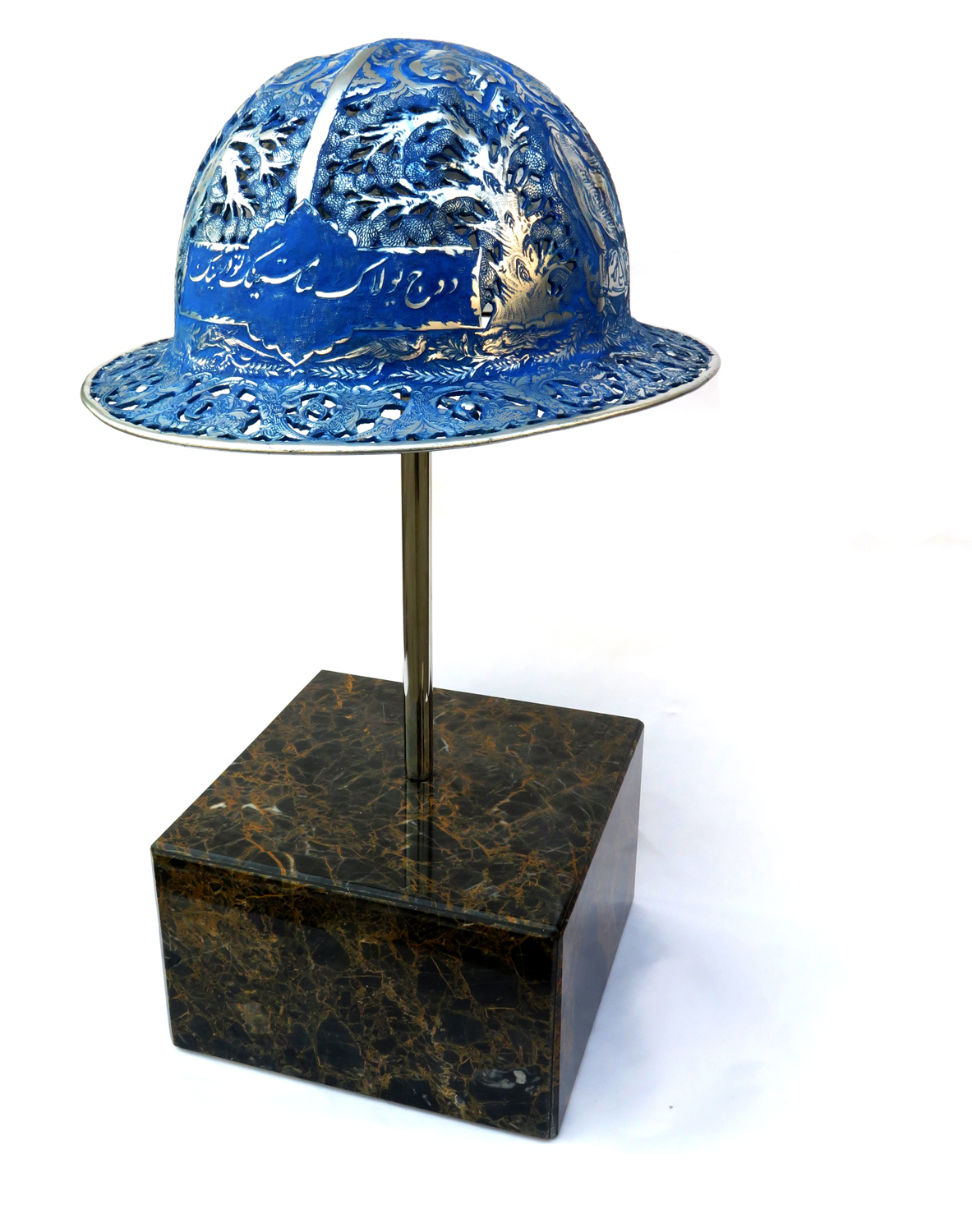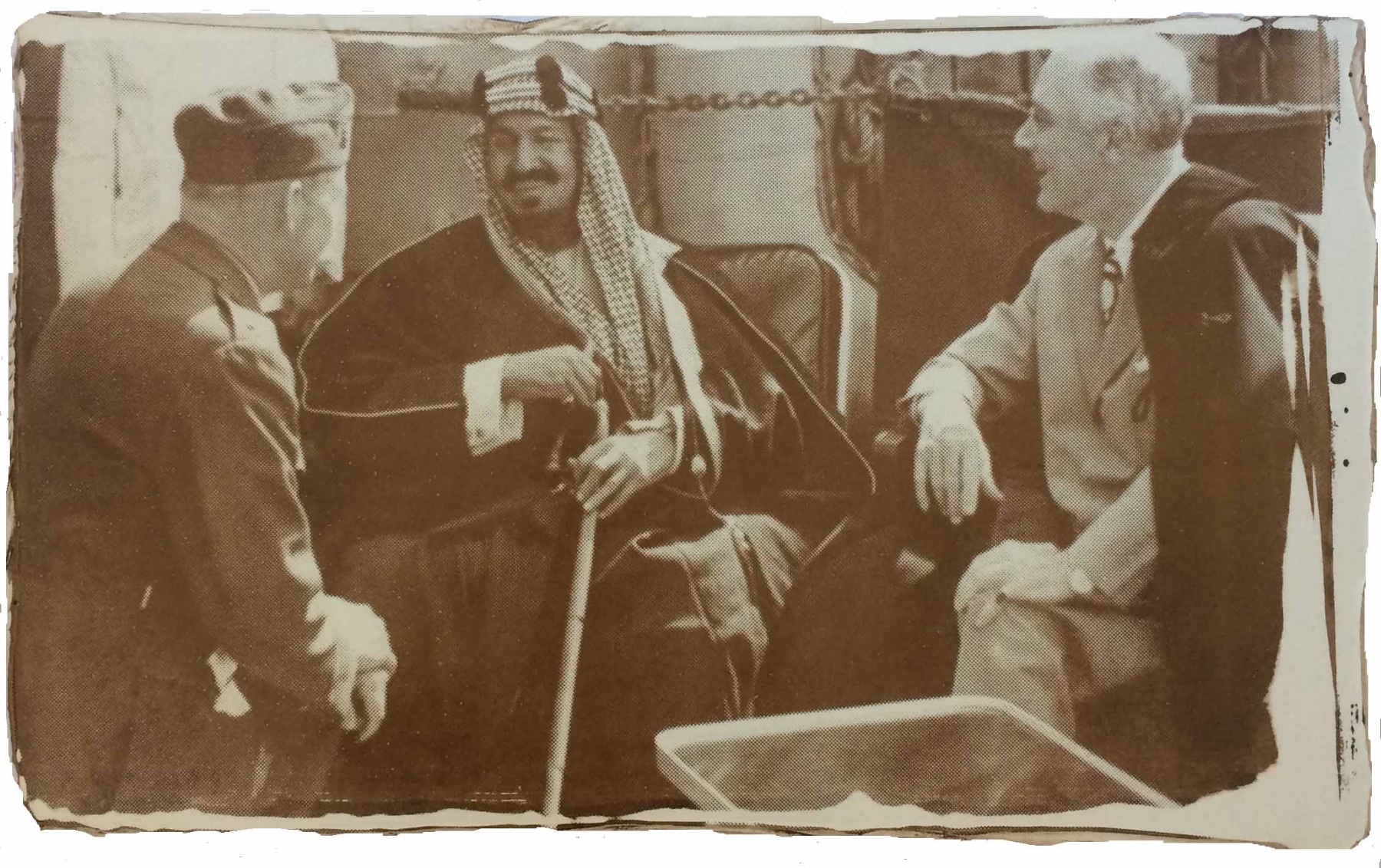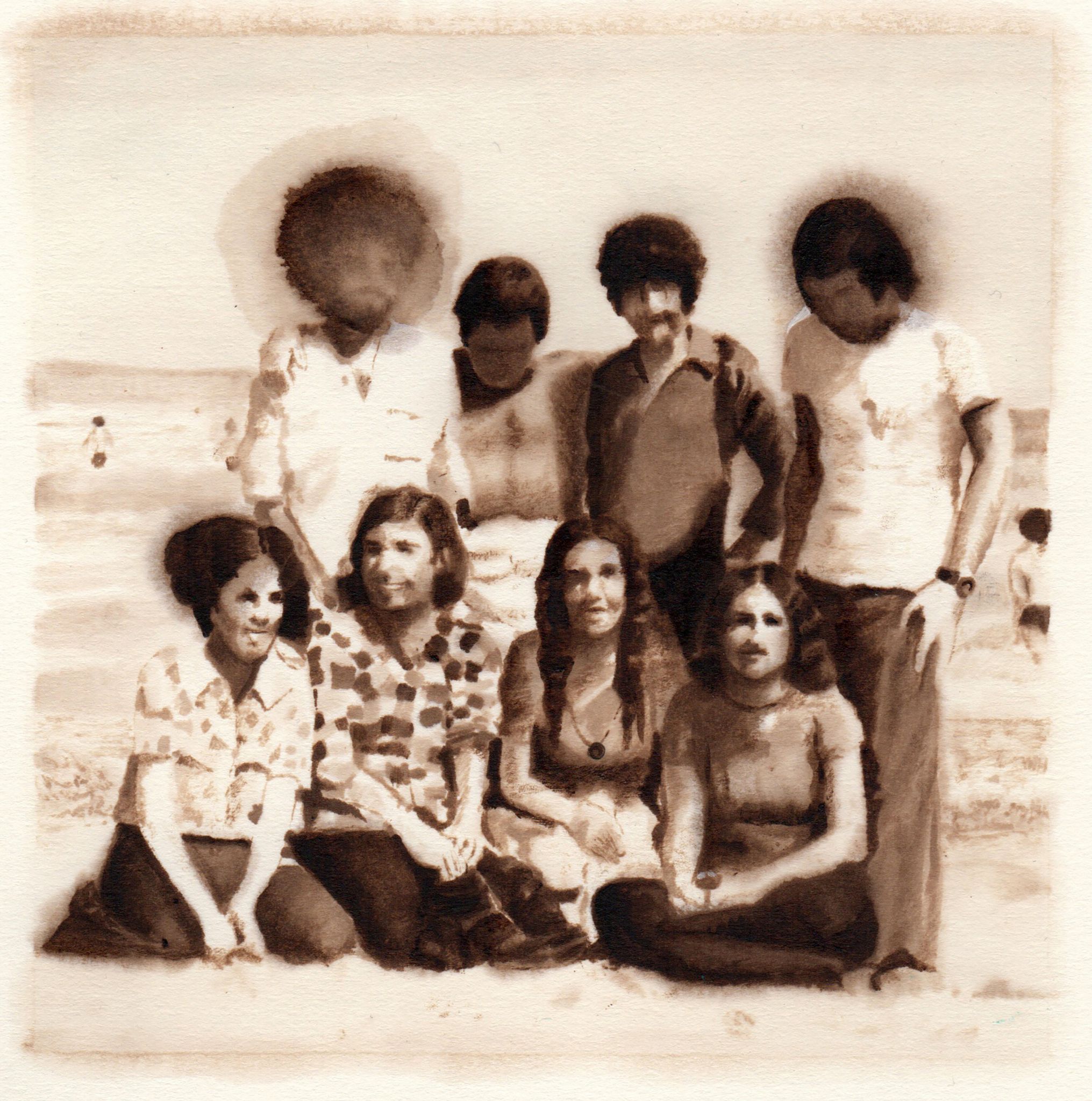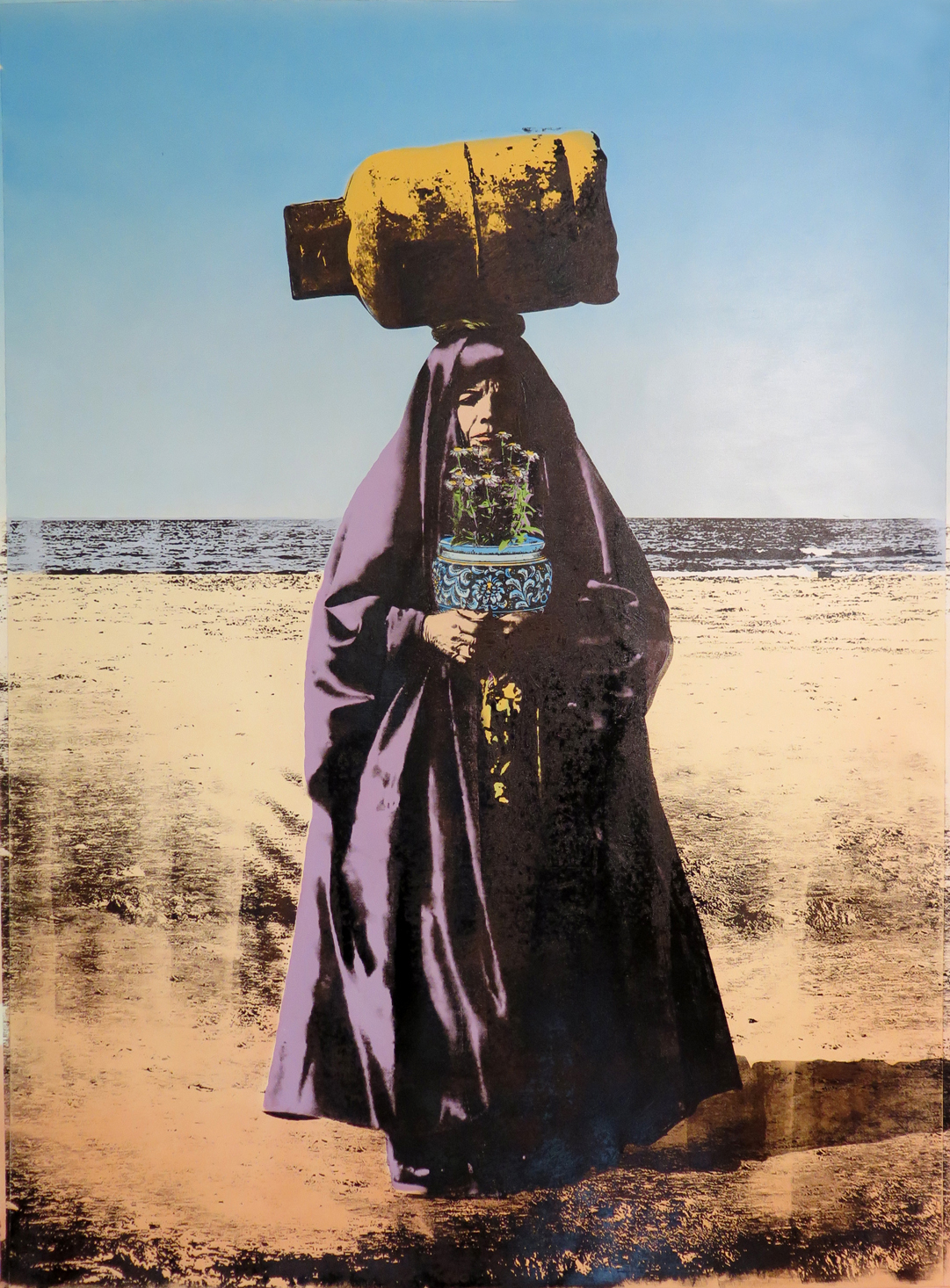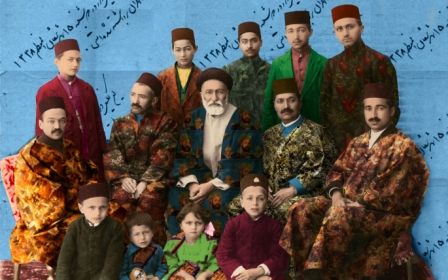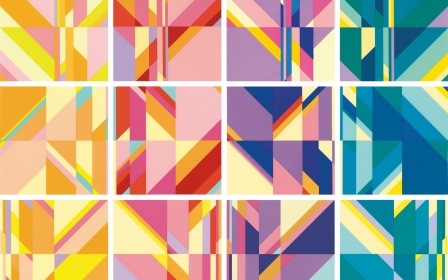From crude oil to canvas: Turning Iran's black gold into art
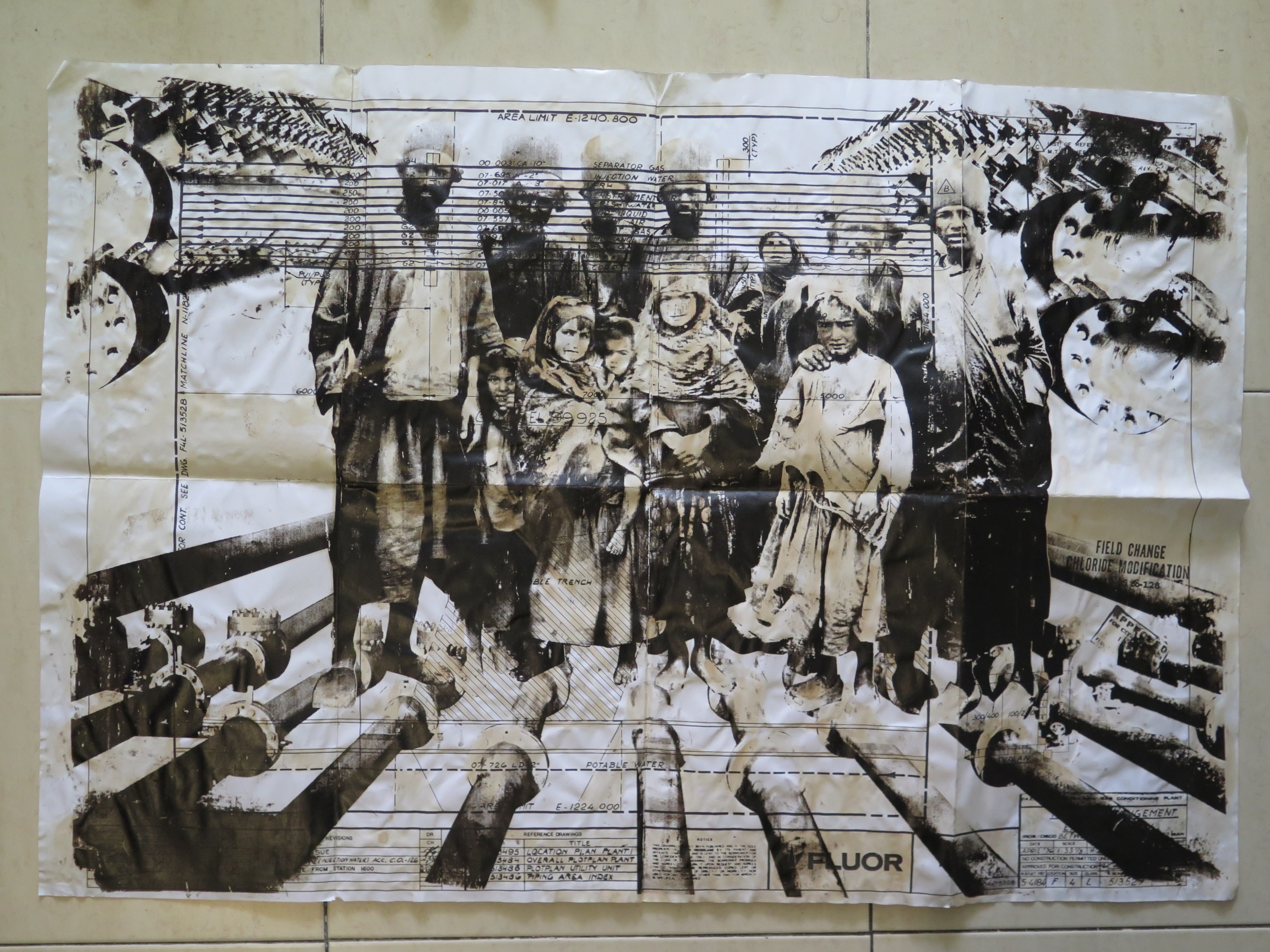
Oil paints have been an artist’s staple since the Renaissance, and in tubes of paint for nearly 200 years - using mostly linseed oil, from the flax plant. But for Iranian artist Amin Roshan, crude oil would ultimately be his tool of choice.
Roshan was born in 1982 near the first oil well drilled in the Middle East, in the Khuzestan Province of southwestern Iran. Though his family have worked in the oil industry for generations, including his grandfather, father, uncle, cousin and brother, Roshan broke with that tradition to become an artist.
And now, after growing up with oil, decades later he is making paintings with it.
In his Fire of Love exhibition, at London’s small Rossi & Rossi Gallery until the 27 March, Roshan finds connections between the modern history of oil in Iran, which began in 1908, and ancient traditions, like fire worship, which inspired the title of the show.
Childhood inspiration
The “Naftoon” district of the city of Masjid-i-Sulaiman, where he grew up, was near the border of Iran and Iraq. It was there that the British, who helped topple an elected government of Iran in 1953 rather than lose their grip on its oil, flexed their imperial muscles from the early 20th Century.
"My shoes were stained with oil. I used to walk back home and wipe off the stain with difficulty, because crude oil was very difficult to clean"
- Amin Roshan
The early British influence - symbolised by the figure of Winston Churchill, who converted Britain’s naval fleet from coal to oil - was so pervasive, that British words even entered tribal languages.
But the grand houses the British built eventually became the property of Iran’s National Oil Company, and were assigned to its employees. Roshan’s grandfather first worked for the British, and most family members subsequently spent their lives in the trade.
Behind Roshan’s childhood home, a thin skin of oil floated on the water of a running stream and he grew up playing between pipelines. “It was always troublesome for me, and my shoes were stained with oil. I used to walk back home and wipe off the stain with difficulty, because crude oil was very difficult to clean. That is, it should be washed with refined oil first, then it should be washed with detergents.”
After they moved, he would always find himself drawn back to his childhood haunts for inspiration, according to the exhibit catalogue which carries a statement from the artist: "I was six years old when my family left the city because of toxic gas release, to go and live in Ahwaz, 145 kilometres away. But from the age of ten I would spend all my summers at my uncle’s house in Masjid-i-Sulaiman and I would often play with my cousins in the streets where we lived."
“It is not easy to say why I have chosen oil as a theme for my last collections,” Roshan he writes in the catalogue. “Being born into a family working in the oil industry and living in a land rich in oil is not the sole answer. The main reason may be its excessive impact and influence not only on my life and family but also on the geography of Iran.”
“Oil is an integral part of global society today,” says Janet Rady, who curated Fire of Love - Roshan’s first solo exhibition in London. “Crude oil as a physical material is readily available in southern Iran, and lends itself as the perfect medium for conveying his message.
“Many artists working in the Middle East are naturally drawn to comment on the socio-political issues affecting their daily lives.”
In one section of the exhibit Roshan’s historical connections are made clear through objects, including a British-made oil-worker’s helmet, and a gas torch, which are decorated in the style of traditional Iranian metalware.
The prints and paintings on the walls behind are atmospheric, evocative, and witty. Surreal scenes in the desert evoke the history of oil exploration, but also his family’s Bakhtiari tribal heritage, stretching back thousands of years for a people who first made their living from herding or carpet-weaving.
His use of vintage British maps and blueprints as his paper reflects the early British role in exploitation of the oil-rich land.
Roshan also blends in nostalgic photographs of personalities and political leaders from the period, using crude oil, and sometimes tea, as his paint.
In his striking images, like brightly hand coloured postcards, a robed woman in vivid purple robes stands in the desert by a blue sea with a bright yellow gas cylinder on her head. Women and tribal elders gather in a landscape dotted with desert plants, palm trees, oil drums and jet planes, in heightened artificial colours reminiscent of Andy Warhol, an artist Roshan acknowledges he is inspired by.
Artists drawn to oil
Roshan is not the only modern artist making art in black gold. In 1977 the Tehran Museum of Contemporary Art opened in Iran. It included a collection of modern masterpieces acquired after the oil crisis of 1973 made the Shah’s government rich, but weakened art prices.
When the Shah of Iran came to open the museum, he reached out and tapped his fingers on the surface, a gesture of impatient curiosity that left the royal fingers covered with the inky black source of his wealth
The Japanese artist Noriyuki Haraguchi had installed a black reflecting pool of oil, which still glints up from the basement through the building’s open floors.
More than 40 years later, those present still remember how, when the Shah of Iran came to open the museum, he reached out and tapped his fingers on the surface, a gesture of impatient curiosity that left the royal fingers covered with the inky black source of his wealth.
Haraguchi returned to Iran recently to restore the work, cleaning out debris and refilling the oil. Another of Haraguchi’s oil pools is owned by the Tate Gallery in London.
Another artist working with crude oil is Richard Wilson, whose celebrated installation 20:50 was purchased by the famed British art collector Charles Saatchi. It is a waist-high reservoir of used sump oil, again a glistening reflective black pool, but with a walkway into the centre of it. Exhibitions of that work have drawn queueing crowds around the world.
Although British painter and sculptor Piers Secunda has made an international reputation for himself making casts of bullet holes from war zones in Afghanistan and Iraq, it was after reading The Prize, the Pulitzer Prize-winning history of the oil industry by author and energy expert Daniel Yergin, that he also started making work in oil.
Secunda makes nostalgic, photographic prints of famous locations and characters of the early oil business using oil sourced from the places he shows. Boom Town, for example, is a panorama of Burkburnett, Texas, named for the film inspired by the story of “the world’s wonder oilfield” with more than 850 wells in 1919.
Other images show early cars and aeroplanes with their pioneer drivers and pilots, and oil fields and their early denizens from Oklahoma to California. The Great Meeting, meanwhile, is a nostalgic image of the wartime meeting between King Abdulaziz Ibn Saud of Saudi Arabia and President Franklin D Roosevelt aboard the USS Quincy in Great Bitter Lake, Egypt on February 14, 1945.
The first meeting between a US President and a Saudi ruler cemented a new strategic relationship as it became clear that Saudi Arabia would become a huge oil producer.
Working with oil
Secunda has a locked collection of oil samples from about 25 different locations places. “I use materials that are directly derived from what’s portrayed, or sourced from the place,” said Secunda. “It brings the outside world into the studio. A material that fuels everything we do all the day long, it reconfigures how you think and look at the work of art, because it is impossible to consider the subject matter without considering the oil first.”
Before he uses the oil, some preparation is required. “To thicken it, I cook it,” Secunda said. “And I can cook a small quantity of it down very, very quickly to about a third of its volume, and that is a smelly process.”
Secunda notes that even acrylic paints - the quick-drying, brightly coloured variety, beloved of amateur and professional artists and far simpler to use than traditional oil - consists of about 50-60 different chemicals almost all derived from crude oil. “When it cures, it’s akin to a plastic,” he said.
'Crude oil is the most flexible and plastic of materials I have ever worked with. It has a sweet, gasoline like smell with a texture like a runny treacle'
- Soheila Sokhanvari
The British-Iranian artist Soheila Sokhanvari, who left Iran in 1978, makes crude oil “drawings” laden with nostalgia.
Her work is inspired by family photographs or media images dating to pre-revolutionary Iran, of figures in shadowed tones with titles like The Invisibles or Paradise Lost.
“Crude oil is the most flexible and plastic of materials I have ever worked with. It has a sweet, gasoline-like smell with a texture like a runny treacle. But once I draw with it, and after it dries, it no longer smells,” she said.
Working with crude oil has its advantages, although, Sokhanvari says, it’s wise to use protective gear when doing so.
“Practical challenges in my experience is that the mark makings vary with the humidity and temperature of the room. So I can never predict how the work will end up, and of course as a mutagenic material, it's a highly dangerous material to use without gloves and masks.”
First, she uses a squirrel-hair brush and starts with the most diluted oil, working up the layers to the final image. Her abstract works also incorporate gold, in pieces meant to represent self portraits.
The concept, she says, “was based on the idea of my absence from Iran. Since I am missing from family events and hence from family photographs, I draw the negative shape between people and objects in family photographs where I should be as my self-portraits. These shapes done in crude oil stand witness to my exile from Iran.”
Once again, and especially for an Iranian artist, the material is a message, as well as the image: “Use of crude oil and gold in my art reflects the fact that these two materials are the most precious commodities that back the US dollar and hence the most important elements in global economic recession,” she said.
'An elemental fire'
Roshan is still working with his signature medium.
From a valley near Masjid-i-Sulaiman, and sometimes from relatives who still work in the business, today he gets two types of material to work with: diluted crude, and oil that has hardened on the surface for about 100 years.
The historic maps that form a backdrop for his works, from the oil cities of Abadan or Ahwaz, date to the days of the Anglo-Iranian Oil Company, founded by the British in 1908 after the discovery of oil in Masjid-i-Sulaiman. He uses oil in the “silk screen” method (of printing with stencils on a fabric mesh) and brewed tea beloved of both Iranians and the British.
Another series of work, Prize from Fairyland, comes from short films he made exploring “oil denial schemes”, the wartime plans by colonial powers to depopulate the region by poisoning water supplies.
But just because it was close to hand, it doesn’t mean it has been easy.
“It is certainly a difficult task,” he writes, “because many times I have painted and finished my work except for printing using oil and the printing has not come out right. The oil may have been too thin or too thick or too hot or too cold…”
At family gatherings in Roshan’s home all the talk at the table was of the daily workings of the oil business - with his cousin, brother, uncle and father in the industry, from digging and construction to finance and social services.
In Khuzestan, oil was a ticket to “a glorious and delightful” life compared to many ordinary Iranians, he said - even electricity, water and gas bills were covered by the company. Even his first design classes came free. For oil company weddings, even the traditional marriage payment to the bride’s mother, the Shir baha, was waived.
Now he has made oil a staple of his artistic work, from the strange “fragrance” of British oil culture, he says, to oil as “an elemental fire” with deep roots in Iranian culture and literature.
His father, now retired, carried his oil company ID in his shirt pocket wherever he went. “I still remember my father's personnel number: 72344,” Roshan said.
“These numbers are full of sensation for me; that is a strange feeling nostalgic of our beautiful childhood. And, especially in these difficult and strange days of Iran, they sound like a sleep-dreaming and reminiscent of dreams for me.”
Amin Roshan’s Fire of Love exhibition is at London’s small Rossi & Rossi Gallery by appointment only until the 27th March, 2020
Middle East Eye propose une couverture et une analyse indépendantes et incomparables du Moyen-Orient, de l’Afrique du Nord et d’autres régions du monde. Pour en savoir plus sur la reprise de ce contenu et les frais qui s’appliquent, veuillez remplir ce formulaire [en anglais]. Pour en savoir plus sur MEE, cliquez ici [en anglais].


